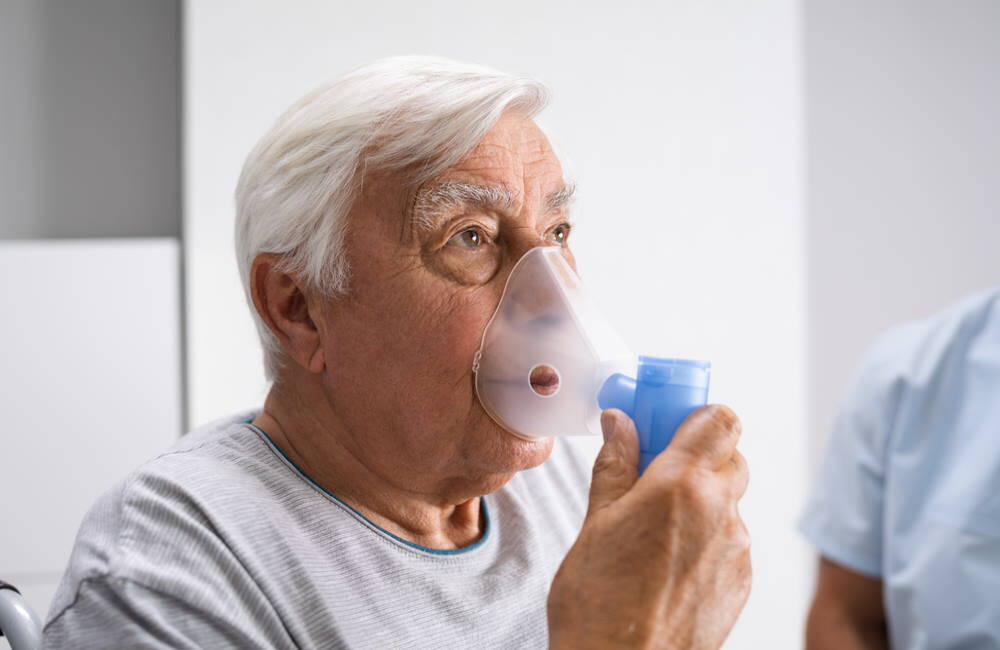People can, and often do, fly with COPD (chronic obstructive pulmonary disease). They should first consult with a doctor, understand the risk, bring with them any necessary medical equipment and consider traveling with a flight nurse.
About 2 billion people travel each year by airplane, with between 18% and 44% having COPD, according to a study from the British Journal of General Practice. For most passengers, even those with COPD and other respiratory diseases, air travel is safe and comfortable.
Of course, there are rules to follow when you decide to fly with COPD, just as there are if you fly after a stroke or fly after a heart attack. The first step is understanding the risks.
Can You Fly After a Heart Attack?
What Is COPD?
COPD is a chronic lung disease. It causes obstructed airflow from the lungs, resulting in symptoms that include breathing difficulty, cough, mucus production and wheezing, according to the Mayo Clinic.
Cigarette smoking is one of the leading causes of COPD, although it can happen with long-term exposure to any type of “irritating gases or particulate matter,” according to the clinic. For those with COPD, the risk is higher that they will eventually develop heart disease, lung cancer and other conditions.
By 2030, health officials think COPD will become the fourth leading cause of death around the world.
In the context of flying, those with COPD can experience issues breathing at high altitudes as the air pressure drops. Most people compensate for this by increasing ventilation, something those with COPD may experience difficulty doing, depending on the severity of the illness.
How To Fly With COPD
There are certain steps to take before flying with COPD. They include the following, according to the Cleveland Clinic.
Consult With a Physician
Past studies have shown that only a small percentage of patients even consult with a doctor before they fly with COPD, which is getting off on the wrong foot. Even if it’s an appointment over the phone, give yourself time in advance to speak with your doctor and get their opinion on your flying. This is especially important if you have been in the hospital lately.
Get Help Leaving the Hospital After Discharge
Access to Oxygen
You need to have access to oxygen in case you experience breathing difficulties. Passengers are not allowed to bring oxygen tanks on an airplane. While some international carriers can provide tanked oxygen, you must use a portable oxygen concentrator (POC) for domestic travel. If you do not own a POC, you can rent one from companies such as Advanced Aeromedical. You will want to find out well in advance when notifying the airline about your flight and the paperwork the airline requires. Ensure you bring both your prescription for the oxygen and the airline forms signed by your healthcare provider when you travel.
Flying with Oxygen & Medications
Medication and Doctor Contact Information
Make sure to take enough medication for your entire trip and pack it all in your carry-on baggage. You’ll also want to carry a list of all your medications and the contact numbers for your doctor, respiratory therapist, and oxygen supplier, in case of emergencies.
Other tips to remember:
- Try to take direct flights to your destination
- Check for any fees related to oxygen
- Get a seat near the bathroom
- If allowed to carry your own oxygen, make sure to take extra batteries
International Travel Checklist
Medical Transportation Assistance
You may also choose to use a non-emergency medical transport (NEMT) company like Flying Angels to provide medical transportation assistance if you choose to fly with COPD. Flight nurses, experienced in providing medical care at high altitudes, can take many of the worries out of flying with COPD.
Flying Angels also handle all the flight arrangements for you and your loved ones, another way of lowering the stress on those trying to fly with COPD or other chronic medical conditions. If you choose to fly with COPD, these tips can make your trip go more smoothly. Having COPD does not mean you cannot fly. It only means you must plan to ensure a safe flight to your destination.
